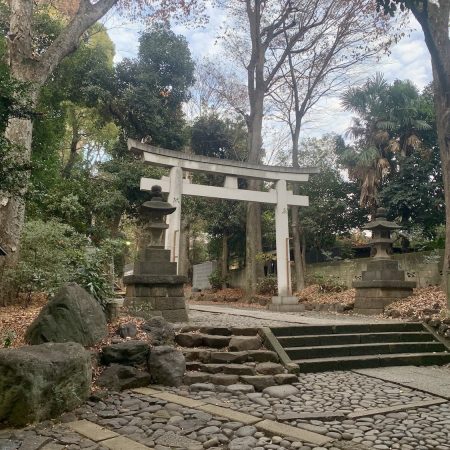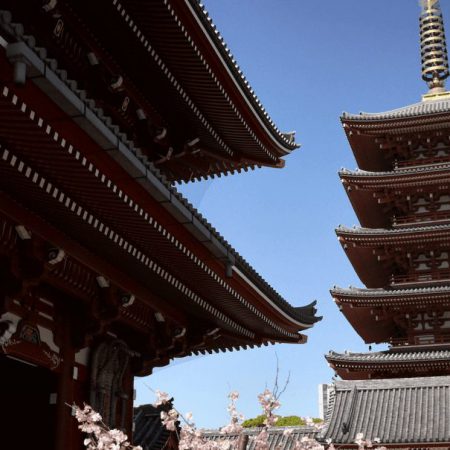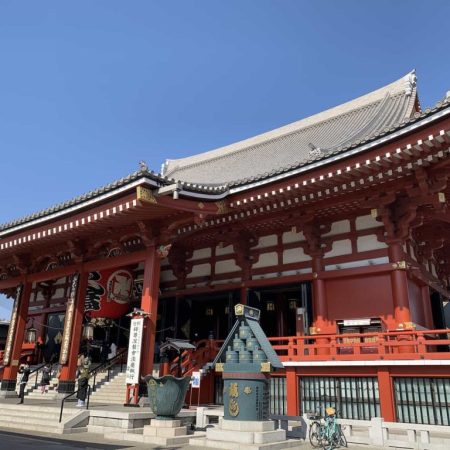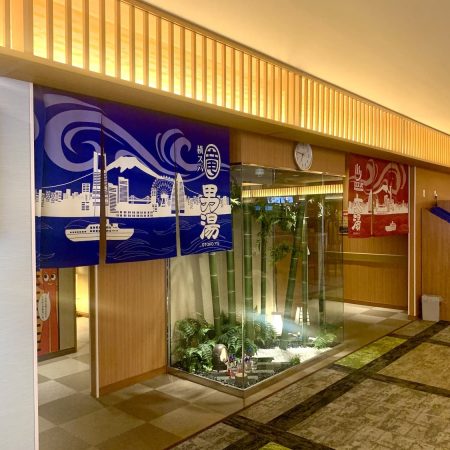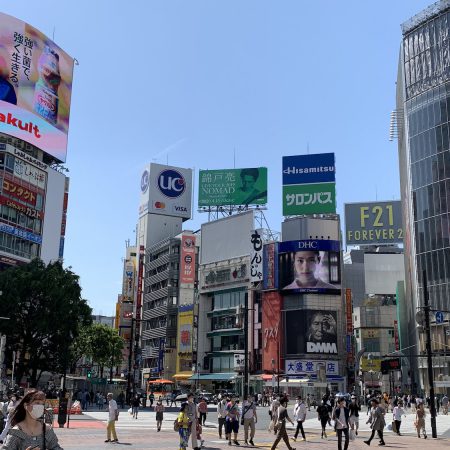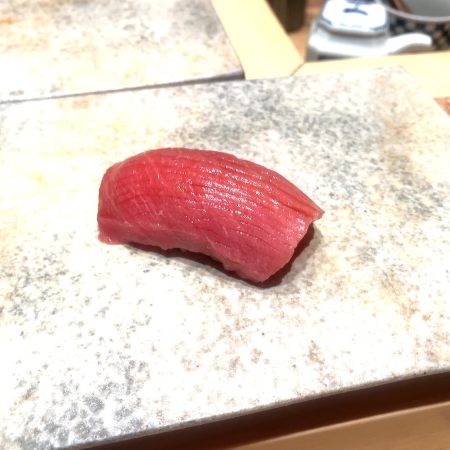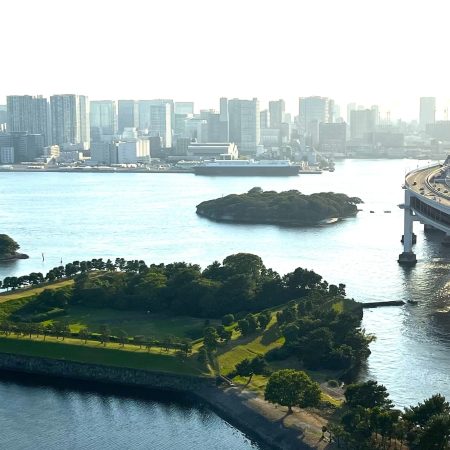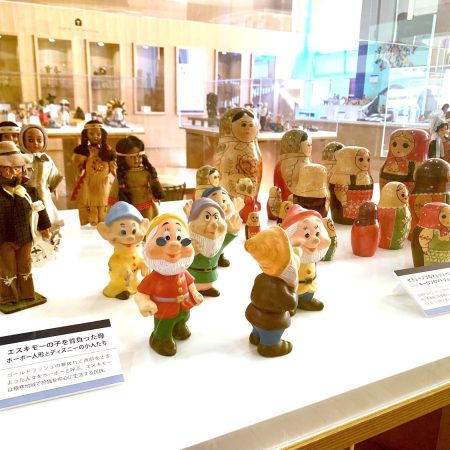Chiyoda Ward in Tokyo is an ideal destination for locals and tourists, offering diverse attractions. Tokyo Station, a major railway hub, includes the underground mall Gransta Tokyo. Marunouchi Square provides easy access to Tokyo landmarks and symbolizes harmony between tradition and modernity.
The Mitsubishi Ichigokan Museum focuses on late 19th-century Western art in a historically significant building. The Idemitsu Museum of Arts showcases Japanese and Chinese art collected over 70 years. The Imperial Palace, the Emperor’s residence, features publicly accessible East Gardens with historical structures.
Hibiya Park, Japan’s first Western-style park, offers a nature-filled escape, while Kita-no-maru Park, located near the Imperial Palace, preserves historical gates and cultural institutions. Chidorigafuchi Moat provides an immersive experience, especially during the enchanting cherry blossom season.
Yasukuni Shrine is dedicated to military personnel, holding significance in Japan’s national sentiments. Kanda Shrine, boasting a 1,270-year history, attracts tourists seeking to experience Japan’s rich history and culture. The flow takes you seamlessly through the varied attractions, capturing the essence of Chiyoda Ward’s cultural and historical richness.
Tokyo Station (東京駅)
Tokyo Station, situated in Marunouchi, Tokyo, serves as a major railway hub for JR East, JR Central, and Tokyo Metro, connecting various destinations. Located at the heart of Japan’s largest business district, it intersects with multiple train lines, including conventional, Shinkansen, and metro services.
The station, linked to an underground mall, connects directly to nearby office buildings, offering a diverse range of shops, restaurants, and attractions. Gransta Tokyo, an Ekiben facility within the station, introduces new shops and enhances station functions, providing gourmet experiences and exclusive souvenirs.
As a key railway gateway, Tokyo Station draws in a diverse crowd, offering captivating experiences with historical buildings and nearby tourist spots. Celebrated for its modern Japanese architecture, Tokyo Station is admired for both its beauty and functionality.
Marunouchi Square (東京駅丸の内駅前広場)
The Marunouchi Square, located in front of Tokyo Station, symbolizes harmony between tradition and modernity, nature and architecture, function, and beauty. Popular among both locals and tourists, it provides easy access to Tokyo landmarks like the Imperial Palace, Ginza, and Nihonbashi.
Recognized as a favored spot for commemorative photos, especially with the Marunouchi station building as a backdrop, the plaza transforms at night with enchanting illuminations, creating a romantic ambiance. Adorned with zelkova trees and lawns, it harmonizes urban and natural elements, complemented by nearby restaurants and shopping areas, enhancing its appeal to tourists.
In the heart of Tokyo, Marunouchi Square offers diverse activities, including sightseeing, shopping, and dining. Positioned at Tokyo Station’s Marunouchi entrance, visitors can relish the beauty of Tokyo’s changing seasons.
This square stands out as one of Tokyo’s captivating tourist destinations, making it a highly recommended place to explore.
Mitsubishi Ichigokan Museum (三菱一号館美術館)
Mitsubishi Ichigokan Museum, situated in Marunouchi, Chiyoda-ku, Tokyo, is operated by Mitsubishi Jisho, a major real estate company. It is a restored version of the original Mitsubishi Ichigokan building from the Meiji era, renowned as Marunouchi’s first Western-style rental office building.
This museum primarily focuses on late 19th-century Western art, housed within a historically significant building designed by Josiah Conder in 1894. The red brick exterior and historical value attract visitors.
The collection includes exquisite late 19th-century Western paintings, sculptures, and crafts, with regular special exhibitions featuring various themed artworks.
Located a 5-minute walk from JR Tokyo Station, the museum operates from 10:00 to 18:00, extending to 21:00 on Fridays (until 18:00 on Fridays falling on public holidays). It is closed on Mondays, during year-end and New Year holidays, and during exhibit change periods. Refer to the official website calendar for details.
Highlights of the museum include the beauty of the building and the showcased late 19th-century Western art, making it a compelling destination for history and art enthusiasts visiting Tokyo.
Idemitsu Museum of Arts (出光美術館)
The Idemitsu Museum of Arts, located in Marunouchi, Chiyoda-ku, Tokyo, features artworks collected by Idemitsu Sazo (1885−1981), the founder of Idemitsu Kosan, over a span of 70 years. Situated on the 9th floor of the Teigeki Building, the museum provides a scenic view of the Imperial Palace moat. Idemitsu Sazo’s extensive collection, encompassing Japanese and Chinese art, offers profound insights into Japanese art and culture.
The museum showcases classical Japanese paintings, ceramics, Buddhist art, and Chinese calligraphy and painting. It stands as a valuable destination for those interested in Japanese art history and culture.
With a beautiful landscape and historical background, the museum building offers visitors a pleasant space. For enthusiasts of Japanese art and culture, the Idemitsu Museum of Arts is a recommended visit to deepen knowledge and appreciate the artistic heritage.
Imperial Palace (皇居)
The Imperial Palace, located in Chiyoda Ward, Tokyo, is the residence of the Emperor of Japan, passed down through successive emperors. Situated within the main part of Edo Castle, it boasts moats, earthen walls, stone walls, turrets, gates, and more, preserving its historical significance. Within the Imperial Palace grounds, visitors can explore the Imperial Residence, the Palace, Momijiyama Silkworm Rearing Facility, and the Imperial Household Agency building. The East Gardens of the Imperial Palace are publicly accessible.
Imperial Residence: Serving as the Emperor’s ordinary residence, it includes facilities for sericulture, a tradition continued by successive empresses since Empress Shoken. The East Gardens of the Imperial Palace are open to the public.
Palace: This venue hosts the Emperor’s official duties and ceremonies, along with the Momijiyama Silkworm Rearing Facility inherited by successive empresses.
East Gardens of the Imperial Palace: Open to the public, this garden within the Imperial Palace features historic buildings and beautiful natural surroundings, including the remains of a donjon, Peach Blossom Music Hall, Rakuchu-sho office building, and Shorinbu office building.
Hibiya Park (日比谷公園)
Hibiya Park, located in Tokyo’s Chiyoda Ward, is Japan’s first Western-style park, spanning approximately 161,636.66 square meters. Situated to the east of the Tokyo Imperial Palace, southeast of the Shimbashi district, and west of the Kasumigaseki government district, it originated as a military parade ground during Japan’s early modernization before evolving into a Western-style park.
Within the park, visitors can explore lush gardens, seasonal blooms, a Japanese garden, and observe local wildlife. Noteworthy features include the architecturally impressive Hibiya Matsumotoro, designed by Shunsuke Matsumoto, a pioneer in modern Japanese architecture. The park, adorned with seasonal flowers, especially cherry blossoms in spring, hosts an open-air music venue for various concerts and events.
Easily accessible on foot from Tokyo Metro’s Kasumigaseki and Hibiya stations, as well as within walking distance from Yurakucho Station, Hibiya Park is a cherished retreat for both locals and tourists seeking a nature-filled escape from the city’s hustle and bustle. Consider taking a leisurely stroll, having a picnic, or enjoying the seasonal blooms during your visit.
Kita-no-maru Park (北の丸公園)
Kita-no-Maru Park, located in Chiyoda Ward, Tokyo, adjacent to the north side of the Tokyo Imperial Palace, is home to renowned institutions such as the Nippon Budokan, the National Museum of Nature and Science, and the Tokyo National Museum.
Originally part of the northernmost section of Edo Castle, known as “Kita-no-Maru,” the park served various purposes during the Edo period, including functioning as a medicinal herb garden and a residence for the Tokugawa family. Surrounded by deep moats and defensive structures from the original castle, it holds significant historical value.
Before its establishment in 1969, the area was named “Daikancho,” housing district administrators after the construction of Edo Castle. The name Daikancho is now commonly associated with the inner-city interchange of the Shuto Expressway.
Kita-no-Maru Park preserves two gates from the Edo Castle era: the Shimizu-mon Gate and the northern Tayasu-mon Gate. Tayasu-mon Gate, the castle’s northernmost gate, features an outer Torii-style gate and a fortified inner gate resembling a watchtower. An inscription outside Tayasu-mon Gate, dating back to 1685, marks it as one of the oldest structures from the original castle.
The Chiyoda Ward Board of Education oversees public elementary and junior high schools, with Fujimi Elementary School designated for Kita-no-Maru Park, and junior high school enrollment following a free-choice system without specific districts.
Harmonizing historical significance with picturesque green spaces, Kita-no-Maru Park houses cultural institutions. When exploring the Imperial Palace vicinity, it is strongly recommended to visit this distinctive destination.
Chidorigafuchi Moat (千鳥ケ淵)
Chidorigafuchi, situated in Tokyo’s Chiyoda Ward, is a captivating location where the rich history and beauty of Japan intersect. This spot provides an immersive experience in Japanese history and culture, especially enchanting during the cherry blossom season.
Located on the northwest side of the Imperial Palace, Chidorigafuchi derives its name from its distinctive shape, resembling a plover, known as “Chidori” in Japanese.
Highlighted Features:
- Cherry Blossom Tunnel: In spring, a vibrant 700-meter cherry blossom tunnel emerges, transforming the surroundings into a stunning pink landscape. The blossoms color the pathways, and illuminated nights create a magical atmosphere.
- Boat Excursions: During the cherry blossom season, consider renting a boat to explore the moat, where the reflected cherry blossoms on the water surface resemble an ethereal pink river.
- Nearby Attractions: Chidorigafuchi’s vicinity offers attractions such as Yasukuni Shrine, spots for autumn foliage, Nippon Budokan, and the historic bookstores of Jimbocho.
Accessible by train, Chidorigafuchi is a brief walk from Kudanshita or Hanzomon Stations, approximately five minutes away.
Chidorigafuchi is a remarkable place that invites you to experience Japan’s history and beauty. Visit during the cherry blossom season for an awe-inspiring landscape.
Yasukuni Jinja (靖國神社)
Yasukuni Shrine, located in Kudankita, Chiyoda-ku, Tokyo, is a Shinto shrine dedicated to the souls of military personnel who lost their lives in wars and internal conflicts on the government and imperial side since the Meiji era in Japan.
Established as a tribute to those who made the ultimate sacrifice in wars, Yasukuni Shrine originated from a cenotaph and venerates the spirits of individuals since the Meiji Restoration. The shrine currently enshrines 2,466,000 spirits, referred to as “Kami,” who dedicated their lives to Japan. Situated in Kudankita, Chiyoda-ku, Tokyo, it attracts tourists and worshippers alike.
Yasukuni Shrine offers a serene atmosphere within its beautiful precincts, allowing visitors to pay their respects to the spirits with reverence. The shrine’s buildings showcase traditional Japanese architectural styles, featuring exquisite roofs and sculptures. With deep connections to Japan’s historical events, Yasukuni Shrine has a significant historical background that draws numerous visitors.
In terms of its significance, Yasukuni Shrine holds great importance in Japan’s national sentiments and historical memory. By enshrining the victims of war, it conveys sentiments of peace and gratitude. Rooted deeply in Japan’s history and culture, Yasukuni Shrine remains a significant presence for many people.
Kanda Shrine (神田神社 (神田明神))
Kanda Shrine, also known as Kanda Myojin, is located in Chiyoda-ku, Tokyo, within the outer Kanda district. It is revered as the collective guardian deity for 108 neighborhood associations, encompassing areas such as Nihonbashi, Akihabara, Otemachi, Marunouchi, and the former Kanda Market and Tsukiji Fish Market. With a history spanning 1,270 years, the shrine has undergone multiple reconstructions due to damage from fires and earthquakes. Positioned in one of Tokyo’s most prestigious areas, Kanda Myojin stands as a testament to resilience and cultural significance.
During the Edo period, Kanda Myojin gained respect from merchants and townspeople, becoming a place for prayers related to prosperous business, academic success, traffic safety, and domestic well-being. The biennial Kanda Festival captivates numerous worshippers with its splendid celebrations.
Within the precincts of Kanda Myojin, you’ll discover beautiful main halls and a Kagura (traditional dance and music) hall welcoming visitors. Particularly noteworthy are the traditional structures and exquisite gardens passed down since the Edo era. Additionally, being close to Akihabara, the epicenter of Akihabara culture, Kanda Myojin offers an atmosphere where contemporary culture seamlessly blends with tradition.
Kanda Myojin stands out as an enticing destination for tourists seeking to experience Japan’s history and culture. When visiting, consider strolling through the serene grounds, immersing yourself in the shrine’s history and traditions.


